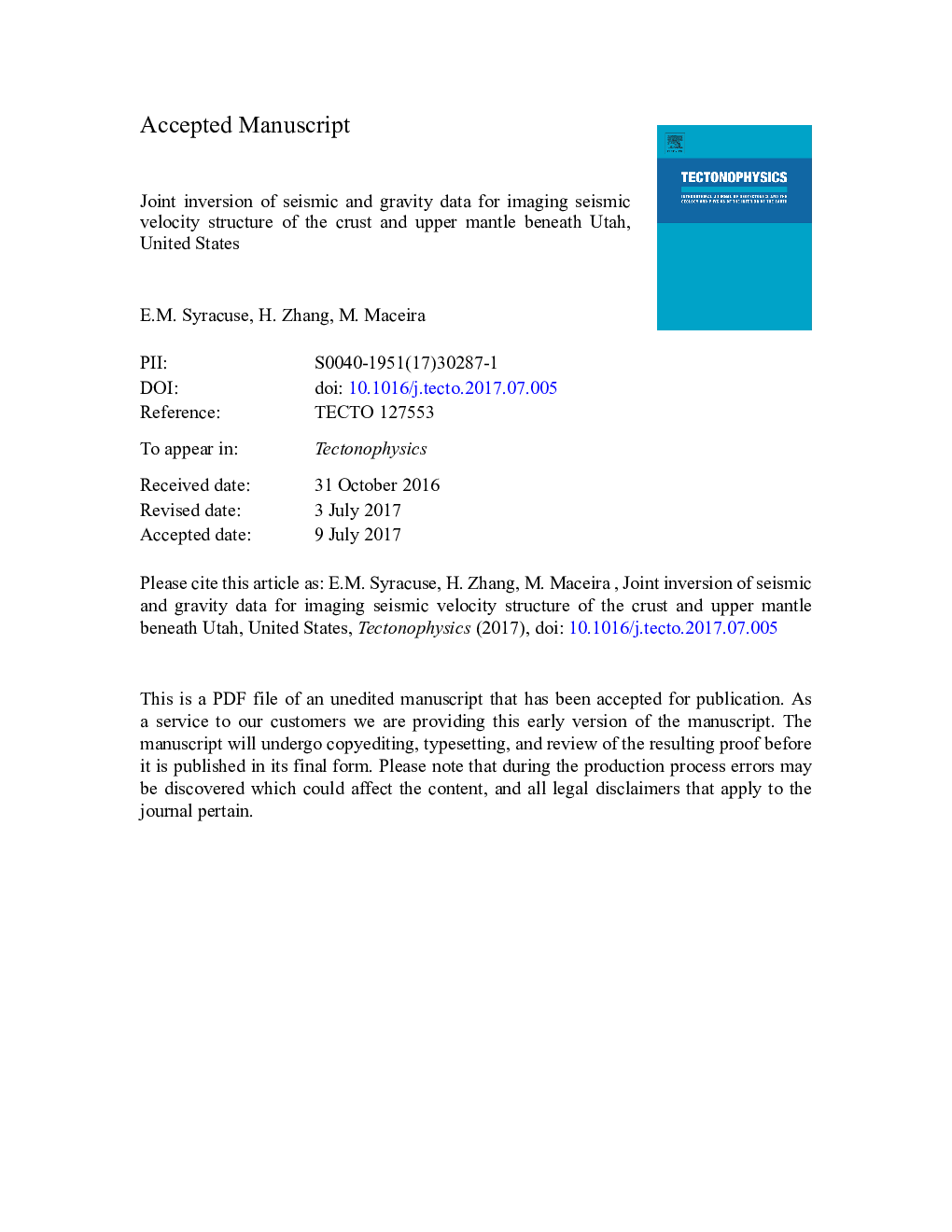| Article ID | Journal | Published Year | Pages | File Type |
|---|---|---|---|---|
| 8908892 | Tectonophysics | 2017 | 44 Pages |
Abstract
We present a method for using any combination of body wave arrival time measurements, surface wave dispersion observations, and gravity data to simultaneously invert for three-dimensional P- and S-wave velocity models. The simultaneous use of disparate data types takes advantage of the differing sensitivities of each data type, resulting in a comprehensive and higher resolution three-dimensional geophysical model. In a case study for Utah, we combine body wave first arrivals mainly from the USArray Transportable Array, Rayleigh wave group and phase velocity dispersion data, and Bouguer gravity anomalies to invert for crustal and upper mantle structure of the region. Results show clear delineations, visible in both P- and S-wave velocities, between the three main tectonic provinces in the region. Without the inclusion of the surface wave and gravity constraints, these delineations are less clear, particularly for S-wave velocities. Indeed, checkerboard tests confirm that the inclusion of the additional datasets dramatically improves S-wave velocity recovery, with more subtle improvements to P-wave velocity recovery, demonstrating the strength of the method in successfully recovering seismic velocity structure from multiple types of constraints.
Related Topics
Physical Sciences and Engineering
Earth and Planetary Sciences
Earth-Surface Processes
Authors
E.M. Syracuse, H. Zhang, M. Maceira,
